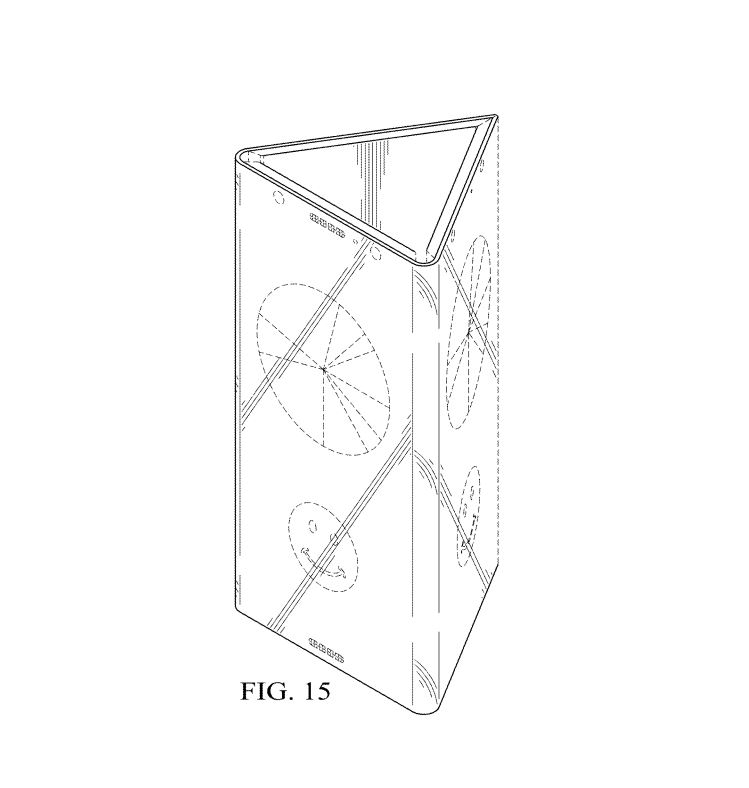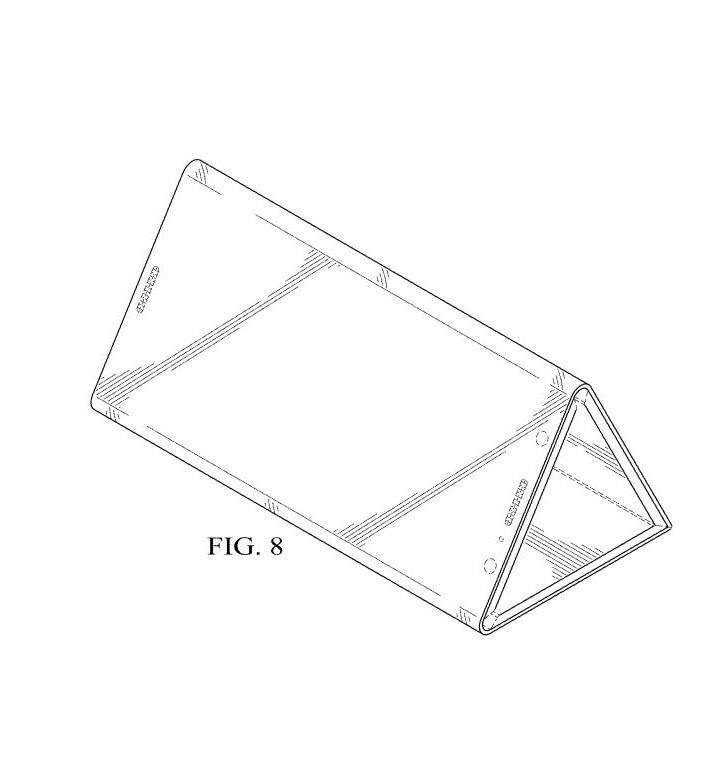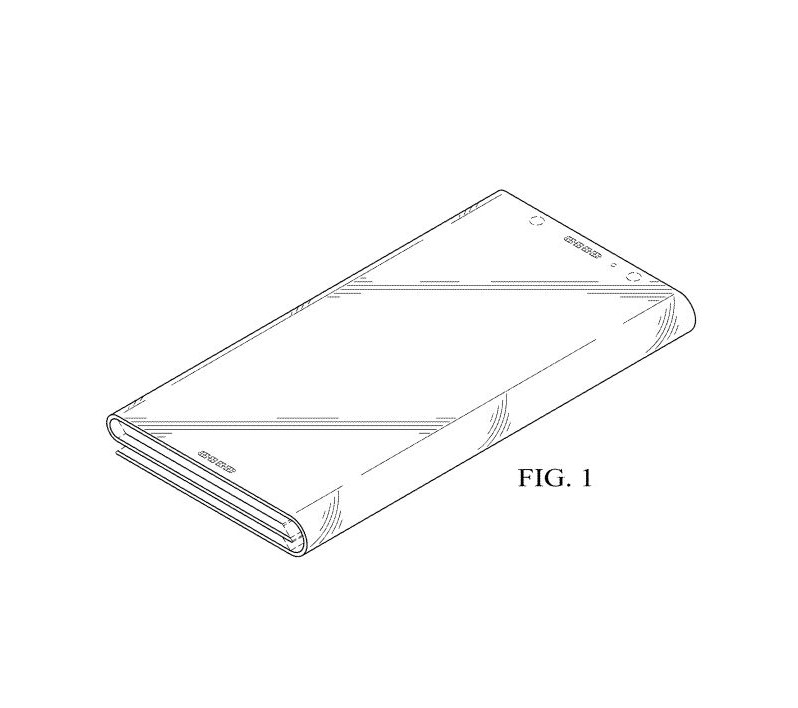Foldable phones, computers, and tablets are looking to be the next big trend in technology, and Lenovo could be next to get in on the wave of future devices. According to a recent patent, it is considering a foldable 2-in-1 with a hinge mechanism that would allow consumers to bend back the screen on the device.
Originally filed in December 2017, and published in July 2018, the patent for “Portable Information Device” states that current-generation tablets have large touch screens and no physical keyboard, but there is a desire for it to be “miniaturized for carrying.” As a solution, the patent suggests a device with a flexible display that can be configured and folded with a hinge in the middle to connect and close a gap between two screens. That would make it much more compact, and presumably similar to Microsoft’s Andromeda computing device.
“A portable information device according to the present invention has a first chassis member and a second chassis member foldably connected by the connection of one edge portions disposed adjacent to each other by a hinge mechanism, a display which is provided over inner surfaces of the first chassis member and the second chassis member and which is foldable into a double-folded state,” Lenovo explains in the patent.
Naturally, the patent doesn’t dive into any details on what operating system this foldable device would run, but it can be assumed that it can either be Android or Windows 10. Dubbed as Windows Core OS, rumors and a leaked internal build string have indicated that Microsoft could possibly be preparing for a new wave of foldable Windows 10 devices, despite having put its own Andromeda device on the shelf. Samsung also confirmed it is planning on releasing a foldable smartphone in 2019, with an Infinity Flex Display.
Patents don’t always turn up to become final products, but it looks as though Lenovo could perhaps be considering a family of new devices. It previously patented a flexible, folding OLED display and a watchband-style hinge. Lenovo does currently have a line of foldable Yoga devices with dual screens, including the Yoga Book, and Yoga Book C930 which features an E Ink display on the bottom, and a traditional touchscreen on the top.





